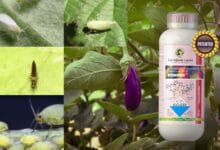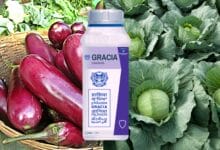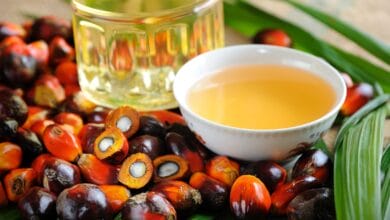Kaka Insecticide: Organic Insecticide for Gardeners.

Introduction
In the ever-evolving world of gardening, maintaining plant health is of utmost importance to gardeners across the globe. One of the critical tools in a gardener’s arsenal is the use of insecticides, which help manage pest populations that threaten the integrity and productivity of various plants. Among the myriad of insecticides available, KAKA insecticide has garnered attention for its efficacy and application in diverse gardening scenarios. This article delves into KAKA insecticide’s composition, application methods, impact on garden health, and its role in sustainable gardening practices.
Efficacy of KAKA Insecticide
Active Ingredients and Their Role
KAKA insecticide is formulated with a unique blend of active ingredients that target common pests while minimizing harm to the environment and beneficial insects. One of the primary active ingredients is Pyrethrin, derived from chrysanthemum flowers. Pyrethrin acts quickly on contact, disrupting the nervous system of insects, leading to their swift elimination. Additionally, KAKA may include plant-based oils, enhancing its effectiveness while providing a more organic approach to pest management.
The combination of these ingredients not only enhances the insecticide’s potency but also allows for a broader spectrum of activity against various pests, including aphids, whiteflies, and spider mites. Understanding the role of these components is crucial for gardeners seeking effective solutions for pest control while being mindful of their impact on the ecosystem.
Comparison with Other Insecticides
When comparing KAKA insecticide to other commercial options, several factors must be considered, including efficacy, safety, and environmental impact. Unlike synthetic insecticides that often contain harsh chemicals, KAKA’s organic formulation provides a safer alternative for gardeners concerned about chemical residues on their produce.
Moreover, KAKA has shown superior performance when tested against other organic insecticides, demonstrating lower toxicity to beneficial insects like ladybugs and bees. This characteristic is particularly appealing to gardeners who aim to promote biodiversity in their gardens while effectively managing pest populations.
Research and Case Studies Supporting Efficacy
Numerous studies have been conducted to assess the efficacy of KAKA insecticide in various agricultural settings. For instance, a case study conducted in a greenhouse environment revealed that KAKA significantly reduced aphid populations on tomato plants, leading to a 30% increase in yield compared to untreated plants. Such evidence underscores the insecticide’s potential to not only control pest pressures but also enhance overall plant productivity.
Furthermore, research indicates that the application of KAKA insecticide results in minimal residual effects, allowing beneficial insects to thrive shortly after treatment. This balance between effective pest control and maintaining a healthy ecosystem is a pivotal factor driving gardeners to choose KAKA over other insecticides.
KAKA Insecticide Uses

Target Pests and Diseases
KAKA insecticide is particularly effective against a wide range of pests that commonly afflict garden plants. Target pests include aphids, caterpillars, thrips, and spider mites, which can cause significant damage through feeding and disease transmission. By managing these pests well, gardeners can keep their plants healthy and productive during the growing season.
KAKA not only fights insects but also helps control some fungal diseases. It does this by stopping spores from infected plants from reaching healthy ones. This dual-action capability makes it a valuable tool in integrated pest management strategies, allowing for comprehensive protection of garden ecosystems.
Recommended Crops and Plants
Gardeners can use KAKA insecticide on a variety of crops, including vegetables, fruits, and ornamental plants. It is especially recommended for crops like tomatoes, cucumbers, peppers, and strawberries. These crops often face high pest pressures. The insecticide’s effectiveness across different plant types makes it versatile and suitable for diverse gardening practices.
Additionally, KAKA can be applied to ornamental plants, enhancing their aesthetic appeal while keeping pest populations in check. This wide use helps gardeners keep their landscapes beautiful. They can do this without harming plant health. This makes KAKA a popular choice for many gardening fans.
Compatibility with Organic Gardening Practices
As organic gardening gains popularity, the demand for environmentally friendly pest management solutions has increased. KAKA insecticide fits well within organic gardening practices, as its ingredients are derived from natural sources, aligning with the principles of organic agriculture.
Gardeners committed to sustainable practices can confidently incorporate KAKA into their pest management programs, knowing that it is compliant with organic standards. This compatibility not only supports the health of the garden but also promotes the health of the surrounding ecosystem, reinforcing the importance of sustainable gardening.
Application of KAKA Insecticide
Preparation and Dilution
For instance, a common dilution ratio might involve mixing one part KAKA with ten parts water, but variations may exist depending on the target pest and plant type. Adequate mixing ensures that the active ingredients are evenly distributed, providing uniform coverage when applied to plant surfaces.
Application Methods
Application methods for KAKA insecticide can vary based on the specific gardening context and the scale of treatment required. For small garden plots, handheld sprayers or ready-to-use sprays are ideal, allowing for precise application to affected areas. For larger gardens or agricultural settings, backpack sprayers or tractor-mounted sprayers may be employed to cover extensive areas more efficiently.
Regardless of the application method chosen, ensuring thorough coverage of plant surfaces is vital. Pest control is most effective when the insecticide comes into direct contact with the pests, so attention should be paid to areas where pests are most likely to congregate, such as the undersides of leaves and flower buds.
Timing and Frequency of Application
The timing of KAKA insecticide application can significantly affect its efficacy. Early morning or late afternoon are often considered the best times, as temperatures are cooler and beneficial insects are less active. Applying during these times minimises potential harm to pollinators and other beneficial organisms, enhancing the sustainability of pest management efforts.
Frequency of application will depend on the severity of pest infestations and environmental conditions. Regular monitoring of pest populations and plant health is crucial; in cases of heavy infestations, reapplication may be necessary within a week. However, over-application should be avoided to prevent the development of pest resistance and to protect beneficial insects.
KAKA Insecticide Dosage
Guidelines for Proper Dosage
Determining the proper dosage of KAKA insecticide is critical for effective pest management. The recommended dosage is typically provided in the product instructions, outlining the appropriate rates for various crops and pests. Adhering to these guidelines ensures that the active ingredients are delivered at levels sufficient to control target insects while minimising risks to the plants and ecosystem.
For example, if the instructions specify a dosage of 2 ml per litre for certain pests, sticking to this recommendation will help optimise results. Additionally, it is essential to consider the growth stage of the plants, as younger plants may require lower dosages to avoid phytotoxic reactions.
Factors Influencing Dosage Requirements
Several factors can influence the dosage requirements of KAKA insecticide, including pest population density, plant growth stage, and environmental conditions. Higher pest populations may necessitate increased dosages to achieve effective control, while younger plants may benefit from lower concentrations to mitigate risks of damage.
Environmental factors, such as temperature, humidity, and rainfall, also play a role. For instance, during periods of high humidity, the persistence of KAKA may be reduced, potentially requiring more frequent applications. Understanding these dynamics allows gardeners to tailor their pest management strategies effectively.
Impact on Garden Health
Benefits to Plant Health and Yield
Utilising KAKA insecticide in a garden can lead to numerous benefits regarding plant health and yield. By effectively controlling pest populations, plants experience reduced feeding damage, allowing them to allocate more resources toward growth and fruit production. This translates to higher yields and improved quality of produce, making KAKA a valuable ally for serious gardeners.
Moreover, the organic composition of KAKA means that it can be integrated into a holistic approach to gardening, supporting healthy soil and plant ecosystems. When pests are managed effectively, plants are less stressed, leading to enhanced growth and resilience against diseases.
Potential Risks and Environmental Considerations
Despite its many benefits, the use of KAKA insecticide is not without potential risks. Over-reliance on any insecticide can lead to issues such as the development of pest resistance, where target pests become less susceptible to the active ingredients over time. To mitigate this risk, it is essential for gardeners to adopt integrated pest management strategies that include cultural practices, biological controls, and rotation of insecticides.
Additionally, while KAKA is designed to be safe for beneficial insects, improper application methods or timing can inadvertently harm these organisms. Gardeners must remain vigilant and informed about best practices to preserve pollinator health and overall biodiversity in their gardens.
Conclusion
Summary of KAKA Insecticide Efficacy and Applications
KAKA insecticide has emerged as a reliable and effective solution for managing pest populations in gardens. Its unique blend of active ingredients allows for rapid action against a variety of pests, while its compatibility with organic practices makes it a suitable choice for environmentally conscious gardeners. Through thorough research and case studies, KAKA has proven its effectiveness in not only controlling pests but also enhancing plant health and yield.
Final Recommendations for Gardeners
Gardeners are encouraged to carefully consider the application of KAKA insecticide as part of a broader integrated pest management strategy. By adhering to recommended dosages, proper timing, and application methods, they can effectively protect their plants while promoting a healthy garden ecosystem. The benefits of using KAKA extend beyond simple pest control; it contributes to overall garden vitality and sustainability, ensuring that both plants and beneficial organisms thrive harmoniously.
FAQs
1. Is KAKA insecticide safe for organic gardening?
Yes, KAKA insecticide is formulated with organic ingredients and is compatible with organic gardening practices.
2. How quickly does KAKA insecticide work?
KAKA insecticide acts quickly upon contact with pests, often leading to noticeable results within a few hours of application.
3. Can KAKA insecticide harm beneficial insects?
While KAKA is designed to minimise harm to beneficial insects, proper application timing and methods are crucial to protect them. It is best applied in the early morning or late afternoon when beneficial insect activity is low.
4. How often should I apply KAKA insecticide?
The frequency of application depends on pest pressure and environmental conditions. Regular monitoring is recommended, with reapplication as necessary, typically within a week for heavy infestations.
5. What pests can KAKA insecticide control?
KAKA insecticide is effective against a range of pests, including aphids, caterpillars, thrips, and spider mites.








